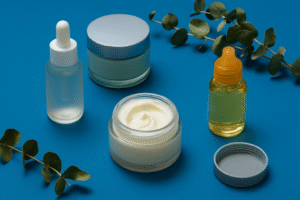At Weitnauer Group, perfume and cosmetics is one of our six core product categories, and we have built a global reputation on helping brands to scale across borders. In 2025, distributors face mounting regulatory scrutiny — from fragrance allergen labelling and banned substances to post-market surveillance, ingredient certification, and customs documentation.
This comprehensive guide provides an overview of the most important perfume and cosmetics market regulation trends for 2025, what’s driving them, and how businesses can future-proof their operations.
4 Key Regulatory Trends Reshaping the Cosmetics and Fragrance Industry
As the global cosmetics and fragrance market evolves, regulatory authorities are responding to mounting pressures across four main areas:
1. Rising Demand for Ingredient Transparency and Consumer Safety
Modern beauty consumers demand full transparency—seeking detailed information about ingredient origins, health impacts, and ethical sourcing. Marketing claims are no longer enough.
For instance, fragrance, once a major selling point, is now under scrutiny, ranking among the top five allergens in cosmetic ingredients. In response, regulators are enforcing stricter rules around allergen labelling, ingredient disclosure, and post-market surveillance—ensuring greater transparency and enhanced consumer safety (ZMUni:Global Guides on Fragrance Allergen Labeling in Cosmetics, 2025).
2. Environmental and Sustainability Regulations
Growing concerns about the environmental impact of cosmetic products—from raw material sourcing to packaging disposal—are driving policy changes. These include ingredient bans (e.g. PFAS restrictions in France), requirements for sustainable formulations, and eco-friendly packaging standards (Perfume Market Trends – Future Market Insights, 2025).
3. Digitalization and Global Marketplace Risks
E-commerce has expanded the global reach of cosmetics and fragrances—but also increased exposure to counterfeits, grey market goods, and non-compliant imports. Regulatory bodies are tightening controls around supply chain traceability, product authentication, and documentation for import/export compliance (Euromonitor International, 2025).
4. Regulatory Harmonization vs. Market Fragmentation
While regions like the EU and ASEAN are moving toward regulatory alignment, many local markets maintain unique requirements. For global beauty brands, this calls for agility, compliance expertise, and strong local knowledge to navigate fragmented frameworks (CIRS Group: Cosmetics Regulatory Updates, 2025).
Regional Breakdown: Key Perfume and Cosmetics Regulation Changes in 2025
While the four global regulatory trends are reshaping the perfume and cosmetics industry, their impact differs across regions – shaped by national policy goals and the evolution of local consumer markets
1. Europe: Raising the Global Bar
Europe remains the gold standard for cosmetics regulations. The updated EU Cosmetics Regulation and its amendments are setting strict benchmarks for ingredient safety, environmental protection, and consumer transparency.
- Fragrance Allergen Labelling: Regulation (EU) 2023/1545 expands the number of substances requiring detailed labelling from 24 to 80. New products must comply by August 2026, and existing non-compliant items must be removed from the market by July 2028. This is arguably one of the most sweeping transparency enhancements in decades(Complife Group, 2025).
- PFAS Ban in France: France is pioneering sustainability regulations by banning per- and polyfluoroalkyl substances (PFAS) in all cosmetics starting in January 2026. This will particularly impact water-resistant and long-wear product lines (Zmuni: Global Cosmetic Regulations Update, 2025).
- CMR Substance Expansion: The EU’s restricted list for Carcinogenic, Mutagenic, and Reprotoxic substances has expanded dramatically, further tightening compliance requirements (European Environmental Agency, 2024).
- EU Borderline Manual Update: redefines classifications for packaging types—such as ampoules, vials, and sprays—impacting import duties and distribution rights. It also clarifies when products in vials or ampoules may fall under medicinal product regulations rather than cosmetics, depending on intended use and presentation (COS Law: Borderline Manual Update, 2025).
To sum up, Europe’s regulatory updates for cosmetics and fragrance products in 2025 focus on four key areas:
- Expanded ingredient labelling (particularly allergens)
- Bans on harmful substances like PFAS and CMRs,
- Packaging classification rules impacting market access
- Clearer distinctions between cosmetics and medicinal products.
2. North America: Modernization and Enforcement
North America’s regulatory environment is moving toward harmonization with global best practices.
- United States: In 2022, Modernization of Cosmetics Regulation Act (MoCRA) introduces new rules for cosmetics, including mandatory registration of products and facilities, monitoring of adverse events, and proof of product safety. Planned bans—such as on formaldehyde—are pushing brands to reformulate (FDA, 2025).
- Canada: Health Canada’s Cosmetic Hotlist recent update dated February 2025 is now a live document that regularly updates banned or restricted ingredients, requiring close monitoring by suppliers and manufacturers (Government of Canada, 2025).
All in all, North American regulations are shifting toward stricter controls and greater transparency—requiring brands to stay alert to ongoing updates, reformulation needs, and documentation requirements.
3. Middle East & EAEU: Stricter Controls and Documentation Demands
In both the Middle East and the Eurasian Economic Union (EAEU), rapid regulatory tightening is reshaping how brands access and operate in the market.
- Saudi Arabia & UAE: In February 2025, the SFDA prohibited cosmetic products from using phrases that suggest they are intended for a specific geographic area (Circular No. 37719/2). Brands must revise any such claims on labels or marketing materials (Chamber International, 2025)
- Eurasian Economic Union (EAEU):
Recent amendments to Technical Regulation TR CU 009/2011 clarify composition requirements for perfumes and cosmetics. The updated regulation expands the list of banned substances (EEC, 2023).
4. Asia-Pacific: Accelerated Modernization and Alignment
Regulatory alignment is accelerating across China, Indonesia, Taiwan, Australia, and ASEAN markets.
Governments are adopting EU-style standards for: ingredient safety and banned substance lists, allergen labelling and claim substantiation, pre-market product approvals and environmental assessments.
- China’s NMPA now requires full safety dossiers and stricter adverse event reporting that took effect in July 2025 (Cisema, 2025).
- Indonesia and Taiwan are updating allergen labelling in line with EU regulations.
- ASEAN and Australia are expanding regulatory oversight on hazardous ingredients and sustainability.
While the EU remains the global benchmark, Asia-Pacific’s reforms reflect a shift toward international best practices. Brands must stay agile and ensure market-specific compliance to maintain access and avoid disruption.
How Distributors Help Protect Brands and Supply Chains
As regulations evolve across regions, certain compliance priorities remain consistent—and a reliable distributor plays a critical role in meeting them. From documentation to risk management, here’s where experienced partners add value:
1. Technical Compliance
Distributors help ensure that all required documentation—such as safety assessments, product registrations, and ingredient disclosures—is accurate, up to date, and audit-ready. Meticulous record-keeping is no longer optional.
2. Supply Chain Risk Management
Proper storage, handling, and traceability are essential to maintain product quality and enable fast action in case of recalls. A compliant supply chain is a protected one.
3. Counterfeit and Grey Market Protection
With the rise of parallel imports and unauthorized resellers, distributors support brands by implementing anti-counterfeit solutions, including trademarks (Global Perfume Market Insights).
4. Technology and Automation
From digital labeling to blockchain-based compliance tools, automation helps reduce human error and streamline regulatory processes. Distributors can assist in deploying and managing these systems efficiently.
5. Local Regulatory Expertise
In a fragmented regulatory landscape, in-market knowledge is vital. Distributors with local teams or regulatory consultants can help brands navigate region-specific requirements and avoid costly missteps (CIRS Group: Cosmetics Regulatory Updates, 2025).
Weitnauer Group delivers distribution across 100 countries, supported by local teams on four continents—ensuring global reach with local regulatory insight. Our teams stay ahead of evolving compliance requirements to safeguard smooth market access for our brand partners.
Strategic Compliance Is the Key to Growth in 2025
The tightening regulations in the global perfume and cosmetics industry are not simply regulatory hurdles—they are forces shaping the future of product innovation, go-to-market strategy, and brand value.
At Weitnauer Group, perfume and cosmetics is more than a product category — it’s an area where we deliver global distribution with local precision. Our local experts across 20 offices worldwide are equipped to help brands navigate every market’s demand, ensuring compliance, risk reduction, and operational readiness.


